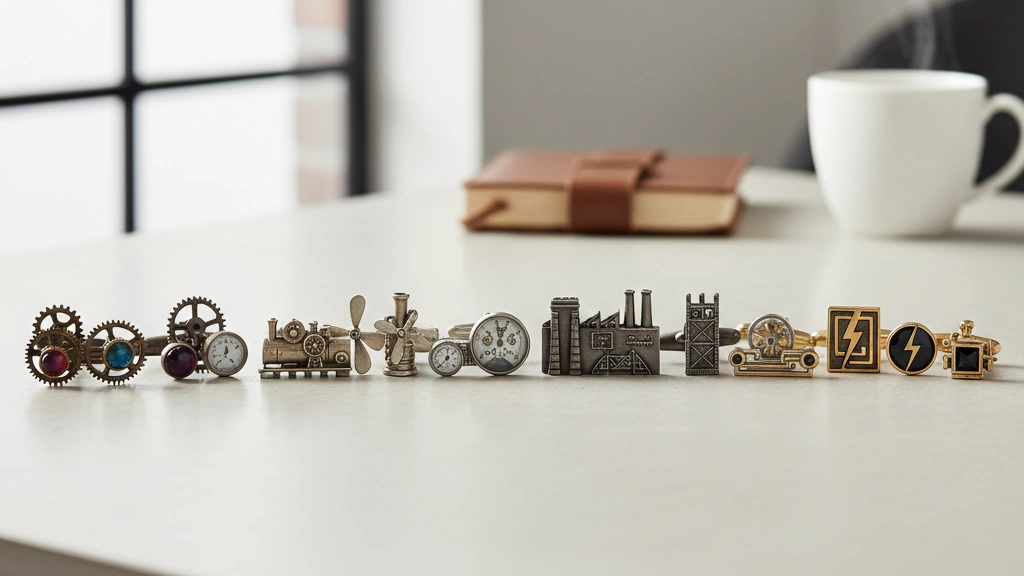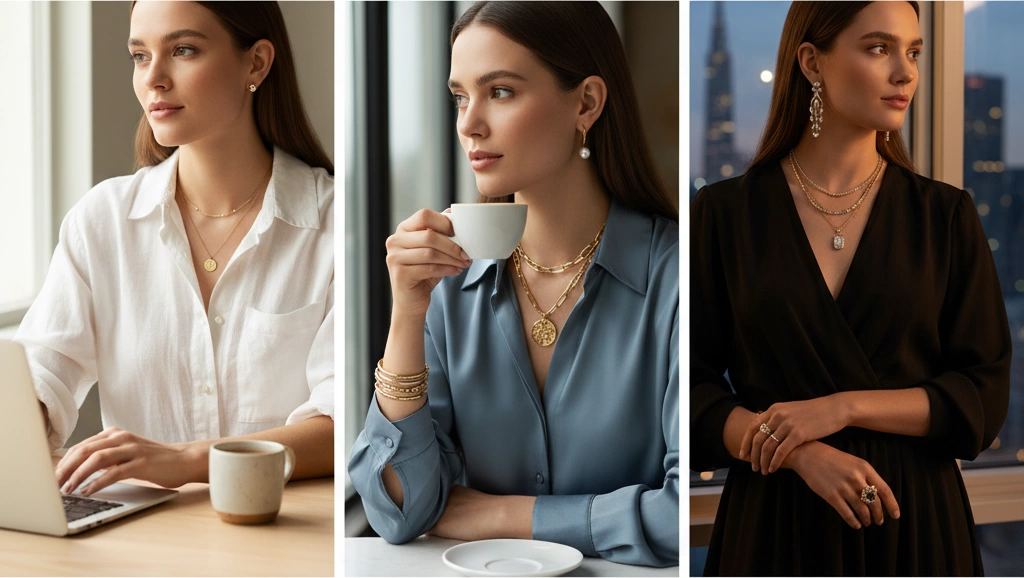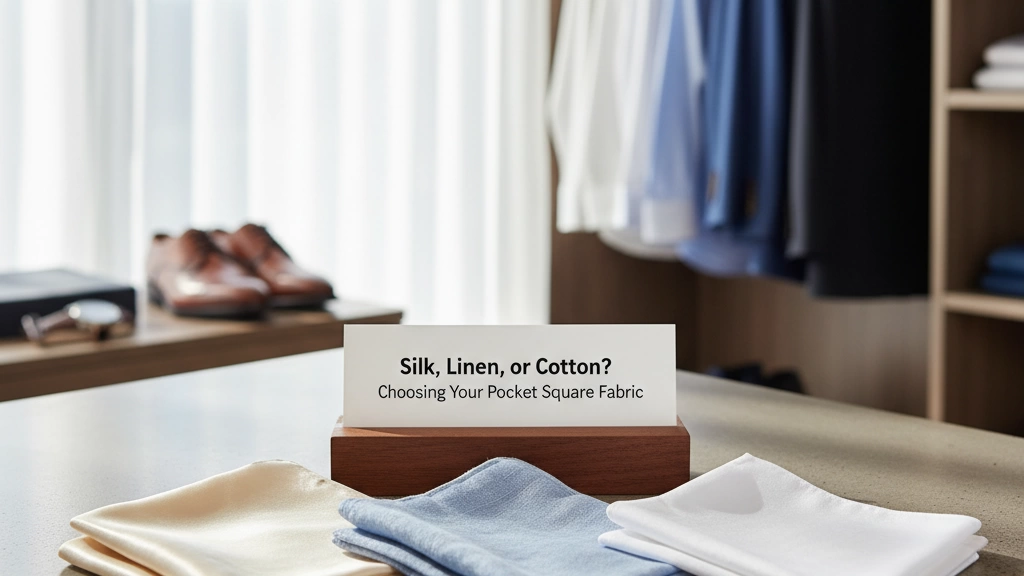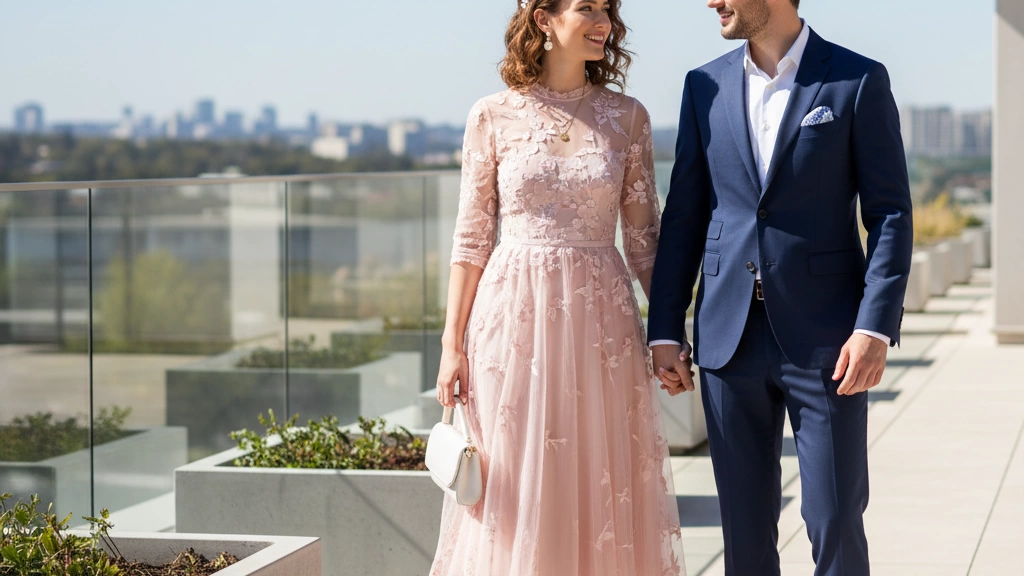From Function to Fashion: The Evolution of Cufflinks has a story that’s as rich and refined as the accessories themselves. What began as simple fasteners for shirt cuffs in the 16th century has since transformed into a bold statement of luxury and personal style. Whether you’re a menswear enthusiast, a groom preparing for your big day, or a collector hunting for vintage Cartier or Art Deco masterpieces, understanding this evolution unlocks a new appreciation for these small but significant adornments. In this article, you’ll discover how cufflinks moved from pure utility to coveted fashion icons, tracing their journey through history, craftsmanship, pop culture, and modern innovation. So, if you’ve ever wondered how cufflinks became synonymous with elegance and exclusivity, read on—because this tale is buttoned up with fascinating details and style secrets you won’t want to miss.
The Functional Origins (16th–18th Century)
Before cufflinks became a fashion statement, they served a simple purpose: fastening sleeves. Early shirts from the 16th century relied on practical closures like ribbons, strings, or tied sleeves to keep cuffs together. These humble beginnings paved the way for a more elegant solution.
The true birth of the cufflink dates back to the reign of Louis XIV of France in the late 17th century. It was during this era that the first gold and silver chain links appeared, around the 1680s, offering a subtle yet refined way to secure shirt cuffs. The French court, with its flair for extravagance, played a crucial role in popularizing these accessories. Lace cuffs, a favorite among aristocracy, demanded a fastening that matched their delicate fabric and ornate style.
This period marks the transition from purely functional fastenings to decorative pieces, laying the groundwork for cufflinks as both a practical and fashionable accessory.
The 19th Century – Industrialization and Democratization

The 19th century was a turning point for cufflinks, thanks to the rise of industrialization. Machine-made cufflinks became widely available, making them more affordable and accessible beyond the elite. This democratization meant more men could enjoy wearing cufflinks as everyday accessories.
During the Victorian era, cufflinks took on sentimental meanings. Mourning cufflinks, often featuring black enamel or jet, symbolized grief, while others showcased personalized engravings or miniature portraits, turning cufflinks into keepsakes.
Popular materials during this time included rolled gold, which offered a luxurious look without the high cost of solid gold. Paste stones and enamel work added color and flair to designs. Among the notable style innovations were swivel-back and dumbbell cufflinks, which made fastening much easier and helped cufflinks stay securely in place. These functional improvements are still common in cufflink designs today.
For those curious about how to match cufflinks with different metals, exploring a modern guide on mixing gold, silver, and rose gold can offer useful tips to elevate your style with ease.
The Golden Age (1900–1940)
The early 20th century marked the golden age of cufflinks, blending Edwardian opulence with the flowing lines of Art Nouveau and the bold geometry of Art Deco. This period saw cufflinks become true fashion statements, crafted from luxurious materials like platinum, diamonds, onyx, and mother-of-pearl. The intricate designs reflected the era’s love for elegance and innovation.
Cufflinks in this era were often masterpieces, produced by renowned makers known for their exceptional craftsmanship and style. These pieces weren’t just accessories; they symbolized status and sophistication.
Notable figures of the time, including aristocrats and Hollywood icons, embraced cufflinks as part of their signature look. The Duke of Windsor’s refined style, Fred Astaire’s suave elegance, and Cary Grant’s effortless charm helped cement cufflinks as a staple of high fashion during this vibrant period.
For those wanting to elevate their formalwear today, mastering cufflink choices is key—pairing designs with the right shirt and occasion makes all the difference. Explore more on pairing cufflinks with different shirts and occasions in this detailed guide on how to wear cufflinks.
Mid-Century Shift and Near Extinction (1940s–1980s)
During the 1940s to 1980s, cufflinks faced a significant decline. World War II brought fabric rationing and material shortages, which pushed simpler clothing styles to the forefront. The button cuff shirt became more popular as it was easier and cheaper to produce, reducing the everyday need for cufflinks.
In addition, the 1960s and 70s saw a rise in minimalist menswear, favoring clean lines and less ornate accessories. As a result, cufflinks slipped out of regular use and became mostly reserved for formal events and diplomatic occasions where tradition still held sway.
Even though cufflinks nearly disappeared from daily wear, they survived quietly in specific circles, especially among diplomats and those required to dress formally. Their subtle presence during this period helped pave the way for the modern revival that followed.
For guidance on formalwear styling, check out this comprehensive guide on elevating your black tie attire.
The Modern Revival (1990s–Today)
The 1990s saw a strong comeback for cufflinks thanks to the resurgence of Wall Street’s “power dressing.” Sharp suits demanded equally sharp accessories, bringing cufflinks back into the spotlight as a symbol of professionalism and style. This era also embraced bespoke tailoring, where personalized details like cufflinks became essential for completing a look.
Influential designers began pushing boundaries, mixing traditional craftsmanship with modern aesthetics. Today’s contemporary cufflink makers offer everything from classic metals and gemstones to innovative materials and playful, novelty designs inspired by pop culture. Limited-edition releases and collaborations have turned cufflinks into collectible statement pieces beyond just formalwear.
If you’re aiming to refine your accessory game, exploring the world of modern designer cufflinks can add a distinctive edge to your wardrobe. For pairing your sartorial choices, check out this detailed guide on essential accessories for a sharp business look to complement your cufflinks perfectly.
Materials and Craftsmanship Through the Ages
Cufflinks have evolved not only in style but also in the materials used, reflecting the tastes and technologies of their time. Early cufflinks were primarily made from precious metals like gold and silver, often adorned with gemstones such as diamonds, onyx, or mother-of-pearl. Enamel work became popular for adding vibrant colors and intricate designs, while silk knots offered a casual, affordable alternative for everyday wear.
Over time, new materials entered the scene:
- Precious metals: Gold, silver, platinum
- Gemstones: Diamonds, onyx, turquoise, paste stones
- Decorative techniques: Enamel, engraving, filigree
- Modern additions: Silk knots, carbon fiber, meteorite inlays
Today’s craftsmanship embraces cutting-edge technology. 3D printing allows designers to experiment with complex shapes and personalized designs that were impossible before. Smart cufflinks with built-in tech features, like fitness trackers or notification alerts, merge style with function. At the same time, there’s a growing focus on sustainability, using recycled metals and lab-grown gemstones to reduce environmental impact—a trend well-covered in the rise of sustainable and ethical fashion jewelry.
For those curious about the different metals and how they affect durability and appearance, exploring resources on understanding different types of metal in jewelry making can be very helpful. This blend of tradition and innovation keeps cufflinks relevant and appealing for modern collectors and fashion enthusiasts alike.
Cufflinks in Pop Culture and Red Carpet History
Cufflinks have long been a staple on the silver screen and red carpet, symbolizing style and sophistication. One of the most iconic figures linked to cufflinks is James Bond. Across six decades, Bond’s cufflink choices have blended sleek design with a hint of gadgetry, reflecting the character’s suave yet practical style. From classic silver to innovative designs, these cufflinks have often set trends in men’s accessories.
The British royal family also plays a role in popularizing cufflinks. King Charles III and Prince William are known for their preference for understated, elegant pieces, often favoring timeless metals like gold and silver. Their choices underline cufflinks as a subtle but essential part of formalwear in royal circles.
Beyond aristocracy and espionage, cufflinks shine on the biggest nights in entertainment. At Oscar ceremonies and the Met Gala, celebrities use cufflinks to express personality and complement luxury couture. Whether it’s a bold Art Deco pair or minimalistic modern designs, cufflinks continue to make statements at these high-profile events.
For men wondering how to incorporate cufflinks into versatile looks, you might find useful tips on transitioning accessories from formal occasions to everyday wear in this detailed guide on office-to-evening transitioning your look with one accessory.
Types of Cufflinks – A Complete Guide
Cufflinks come in a variety of styles, each with its mechanism and appeal. Here’s a quick rundown of the most common types:
-
Whale-back / bullet-back: These are the most popular and easy to use. They feature a flat, solid post with a hinged “bullet” that flips back to secure the cufflink in place. Great for everyday wear and formal occasions.
-
Chain link: The oldest style, featuring two decorative ends connected by a short chain. Classic and flexible, but less common today due to its more casual vibe.
-
Ball return: These have a small ball on the opposite side of the decorative front. The ball acts like a toggle, slipping through the cuff hole and holding the cufflink snug.
-
Fixed-back: A solid, non-movable piece behind the face. These cufflinks are simple and durable but can be trickier to put on, requiring precise alignment.
-
Silk knot: Made from twisted silk or fabric ropes, these are an affordable, colorful alternative to metal cufflinks. Perfect for casual or creative looks.
-
Double-sided vs single-sided: Double-sided cufflinks feature decorative elements on both ends, often with one smaller or simpler side to hold the cuff. Single-sided cufflinks have just one visible decorative front, with the back being plain or functional.
Choosing the Right Mechanism for Occasion
- For formal events or business attire, whale-back and ball return types are dependable and easy to wear.
- When aiming for vintage or relaxed style, chain link cufflinks can add a touch of nostalgia.
- Silk knots are ideal for casual or creative dress codes.
- If you’re new to cufflinks, whale-back models are typically the easiest to handle and less likely to get stuck.
Understanding cufflink types helps you pick the right pair to match your style and occasion. To further refine your choice, you can explore a complete guide to choosing cufflinks that breaks down mechanisms and styles for every need.
How to Wear Cufflinks in 2025
Wearing cufflinks right in 2025 means understanding the subtle differences between shirt cuffs and matching your accessories thoughtfully. The classic French cuff shirt remains the top pick for formal occasions, offering that crisp, double-layer cuff perfect for cufflinks. Meanwhile, convertible cuff shirts give more versatility—they work with cufflinks but also have buttons if you prefer a simpler look.
When it comes to styling, matching metals is key. Coordinate your cufflinks with your watch, belt buckle, and any other jewelry to keep a clean, polished appearance. For example, gold cufflinks pair well with a gold watch or tie pin, while silver or platinum cufflinks suit stainless steel or white gold accessories.
Dress codes shape your cufflink choices:
- Formal events (black tie, white tie): Opt for elegant, understated cufflinks in precious metals like platinum or gold, possibly adorned with diamonds or onyx.
- Business settings: Choose classic designs—swivel-back or bullet-back styles in gold, silver, or enamel work well here.
- Creative casual: Feel free to experiment with novelty or colorful cufflinks, including silk knots or pop-culture inspired pieces.
For weddings, especially for grooms and groomsmen, cufflinks are both a style statement and a sentimental accessory. Consider personalized cufflinks engraved with initials or wedding dates. Don’t hesitate to complement your cufflinks with matching tie bars or pocket squares for a balanced, sharp look.
For more tips on accessorizing for special events, explore polished wedding guest style ideas to stand out gracefully without overshadowing.
Collecting and Investment Value
Vintage cufflinks by luxury brands like Cartier and Fabergé often make headlines at auctions, fetching high prices thanks to their craftsmanship, rarity, and historical significance. Collectors look for several key factors when assessing value:
- Brand prestige: Names like Cartier, Fabergé, Tiffany & Co., and Asprey command top dollar.
- Condition: Mint, well-preserved pieces are more collectible.
- Materials: Precious metals (gold, platinum), genuine gemstones, and intricate enamel work boost value.
- Design and era: Unique Art Deco or Edwardian designs tend to attract attention.
- Provenance: Cufflinks with a documented history or celebrity ownership are highly prized.
Proper care is essential to maintain value over time. Store vintage cufflinks separately in soft pouches or lined boxes to prevent scratches and tarnishing. You can also follow expert advice on cleaning delicate jewelry by consulting guides on how to clean your fashion jewelry and make it last longer. Avoid harsh chemicals and moisture, and consider professional cleaning for valuable pairs. For safe organization, see tips on storing your necklaces and bracelets, which apply well to cufflinks too.
Collecting antique cufflinks can be rewarding both as an investment and as a way to own a piece of fashion history. Knowing how to care for your collection preserves their beauty and ensures they remain valuable for years to come.
The Future of Cufflinks
Cufflinks are evolving beyond their traditional role, embracing sustainability with the rise of lab-grown gems and eco-friendly materials. This shift not only reduces environmental impact but also offers affordable luxury without compromising on style or quality.
Another exciting trend is the move toward gender-neutral and women’s cufflinks. Once seen as a strictly male accessory, cufflinks are now designed with versatile aesthetics, allowing anyone to express personality and creativity. Expect more bold colors, unique shapes, and inclusive designs that break old fashion boundaries.
Technology is also shaping the future of cufflinks. From smart cufflinks that track fitness to models with hidden USB drives or even NFC chips for contactless sharing, innovation is turning this classic accessory into a functional gadget. These tech-integrated designs cater to the modern wearer who values both style and practicality.
For anyone interested in exploring how classic fashion meets modern trends, cufflinks perfectly blend tradition with today’s values and tech-savvy lifestyle. If you’re after tips on formalwear styling and wedding accessories, check out this winter wedding accessories guide for inspiration.


